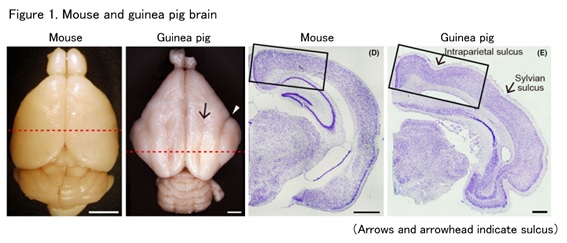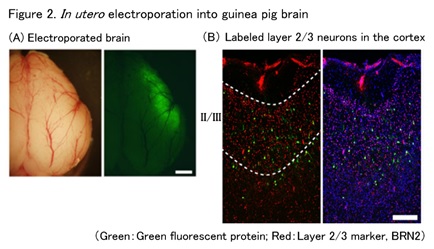
Jun Hatakeyama*, Haruka Sato* and Kenji Shimamura.
Developing guinea pig brain as a model for cortical folding
Develop. Growth Differ. 2017 May;59(4):286-301.
* equal contribution
The cerebral cortex in mammals, the neocortex specifically, is highly diverse among species with respect to its size and morphology, likely reflecting the immense adaptiveness of this lineage. In particular, the pattern and number of convoluted ridges and fissures, called gyri and sulci, respectively, on the surface of the cortex are variable among species and even individuals. However, little is known about the mechanism of cortical folding, although there have been several hypotheses proposed. Recent studies on embryonic neurogenesis revealed the differences in cortical progenitors as a critical factor of the process of gyrification. Here, we investigated the gyrification processes using developing guinea pig brains that form a simple but fundamental pattern of gyri (Figure 1). In addition, we established an electroporation-mediated gene transfer method for guinea pig embryos (Figure 2). We introduce the guinea pig brain as a useful model system to understand the mechanisms and basic principle of cortical folding.

